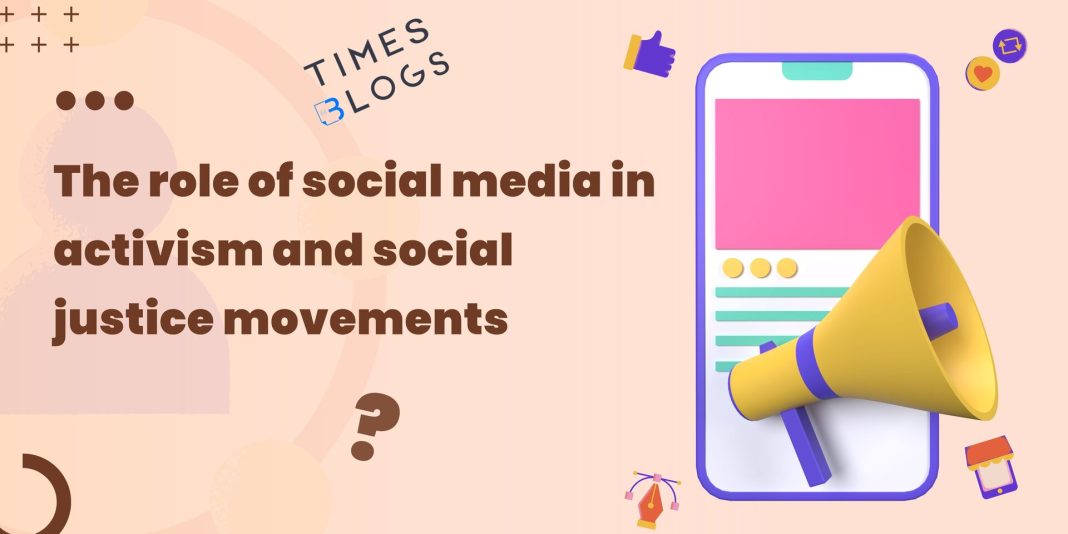In recent years, social media has become an integral part of our lives, providing a platform for people to connect and share information. The rise of social media has had a significant impact on the way we communicate and consume information, and this has had a profound effect on social justice movements around the world. In this blog, we will explore the role of social media in activism and social justice movements, looking at examples of how it has been used to bring about change.
Table of Contents
What is social media activism?
Social media activism, also known as slacktivism or clicktivism, refers to the use of social media platforms to promote and support a particular cause or issue. This type of activism is characterized by low-cost and low-risk actions, such as sharing posts or signing petitions. While some people criticize social media activism as being superficial and ineffective, others argue that it can be a powerful tool for raising awareness and mobilizing people to take action.
The impact of social media on activism
Social media has had a profound impact on activism and social justice movements. One of the key benefits of social media is that it enables activists to reach a wide audience quickly and easily. In the past, activists had to rely on traditional media channels, such as newspapers and television, to get their message out to the public. This often meant that their message was filtered and distorted by mainstream media outlets. With social media, activists can bypass these channels and speak directly to their audience, which allows them to control the narrative and present their message in a way that resonates with people.
Another benefit of social media is that it allows activists to organize and mobilize people in ways that were not possible before. Social media platforms, such as Facebook and Twitter, enable activists to create groups, organize events, and communicate with supporters in real-time. This has made it easier for activists to coordinate protests, rallies, and other types of activism. For example, the Arab Spring protests that took place in 2010 and 2011 were largely organized through social media, with activists using Facebook and Twitter to coordinate protests and share information.
Social media has also played a crucial role in raising awareness about social justice issues. Social media platforms enable activists to share videos, photos, and other content that can be used to educate people about social justice issues. This has helped to raise awareness about issues such as police brutality, racial injustice, and gender inequality. For example, the #MeToo movement, which started as a hashtag on social media, brought attention to the widespread problem of sexual harassment and assault.
Case studies: examples of social media activism in action
Black Lives Matter
The Black Lives Matter movement, which began in 2013, has been one of the most prominent social justice movements of recent years. The movement aims to raise awareness about police brutality and racial injustice towards Black people. Social media has played a key role in the movement, with activists using hashtags such as #BlackLivesMatter to bring attention to the issue.
One of the most notable examples of social media activism within the Black Lives Matter movement was the use of Facebook Live to stream protests and rallies. This enabled people who could not attend the protests in person to watch them online and show their support. The use of social media also helped to spread the message of the movement globally, with protests taking place in countries such as the UK and Australia.
Women’s March
The Women’s March, which took place in January 2017, was a global protest against gender inequality and women’s rights. The march was organized in response to the election of Donald Trump as President of the United States and his history of making derogatory comments about women. Social media played a crucial role in organizing the march, with activists using Facebook and Twitter to spread the word and coordinate the event.
The use of social media also helped to raise awareness about the issues that the march was protesting against. The hashtag #MeToo was trending at the time, and many women used social media to share their own experiences of sexual harassment and assault. This helped to create a sense of solidarity among women and drew attention to the prevalence of these issues.
Climate strikes
The climate strikes, which began in 2018, were a series of protests and rallies aimed at raising awareness about climate change and demanding action from governments and corporations. The strikes were largely organized through social media, with activists using platforms such as Instagram and Twitter to spread the word and coordinate the events.
Social media played a crucial role in making the climate strikes a global movement. The hashtag #FridaysForFuture, which was started by the activist Greta Thunberg, became a rallying cry for the movement. Social media also helped to spread awareness about the urgency of the issue, with photos and videos of the strikes being shared widely on platforms such as Instagram.
Arab Spring
The Arab Spring, which began in 2010, was a series of protests and uprisings that took place in several countries in the Middle East and North Africa. Social media played a crucial role in organizing the protests, with activists using platforms such as Facebook and Twitter to coordinate and spread information.
One of the most notable examples of social media activism during the Arab Spring was the use of Twitter to share information about the protests in real-time. This enabled activists to stay informed about what was happening on the ground and helped to spread the word about the protests to a global audience. Social media also helped to connect activists across different countries, allowing them to share strategies and tactics.
Challenges and criticisms of social media activism
While social media activism has been effective in many cases, it is not without its challenges and criticisms. One of the main criticisms of social media activism is that it can be superficial and ineffective. Sharing a post or signing a petition can give people a sense of accomplishment, but it may not lead to real-world change.
Another challenge of social media activism is that it can be vulnerable to censorship and surveillance. Governments and corporations can monitor social media platforms and restrict the flow of information, which can make it harder for activists to organize and spread their message. In addition, social media platforms themselves can censor or remove content that they deem to be inappropriate or offensive.
Slacktivism
Slacktivism is a term used to describe the idea that social media activism is often seen as a substitute for real-world action. The term is derived from the words “slacker” and “activism” and suggests that social media activism can give people a sense of accomplishment without actually leading to any meaningful change.
Some critics argue that social media activism can be a form of “virtue signaling” – a way for people to signal their support for a cause without actually doing anything tangible to help. While social media can be a powerful tool for raising awareness, it is important to remember that real-world action is necessary to effect real change.
Filter bubbles and echo chambers
Social media algorithms are designed to show users content that is most relevant to them, based on their interests and browsing history. While this can be convenient for users, it can also create “filter bubbles” and “echo chambers” – environments where people are only exposed to information that reinforces their existing beliefs and opinions.
This can be a problem for social justice movements, as it can make it harder to reach people who may not already be supportive of a particular cause. Social media users may also be less likely to engage with content that challenges their beliefs, which can make it harder for activists to change hearts and minds.
Digital divide
Another challenge of social media activism is the “digital divide” – the gap between those who have access to digital technology and those who do not. While social media can be a powerful tool for organizing and mobilizing people, it is important to remember that not everyone has access to the internet or social media platforms.
This can be particularly problematic for social justice movements that are focused on issues affecting marginalized communities, such as low-income individuals or people living in rural areas. Activists may need to use a variety of tactics – including traditional grassroots organizing – to reach these communities and build support for their cause.
Conclusion
Despite the challenges and criticisms of social media activism, it is clear that social media has played a significant role in advancing social justice causes around the world. Social media has helped activists to reach a wider audience, organize and mobilize people, and raise awareness about important issues.
As social media continues to evolve, it will be important for activists to adapt their strategies and tactics accordingly. This may involve using a variety of channels to reach different audiences, engaging with people in real-world settings, and building coalitions with other organizations and movements.
Ultimately, social media activism should be seen as one tool among many in the activist’s toolbox. While it can be a powerful tool, it should be used in conjunction with other tactics to effect real-world change and build lasting social justice movements.




